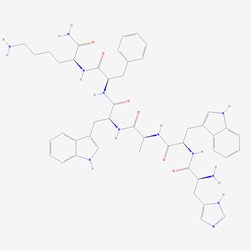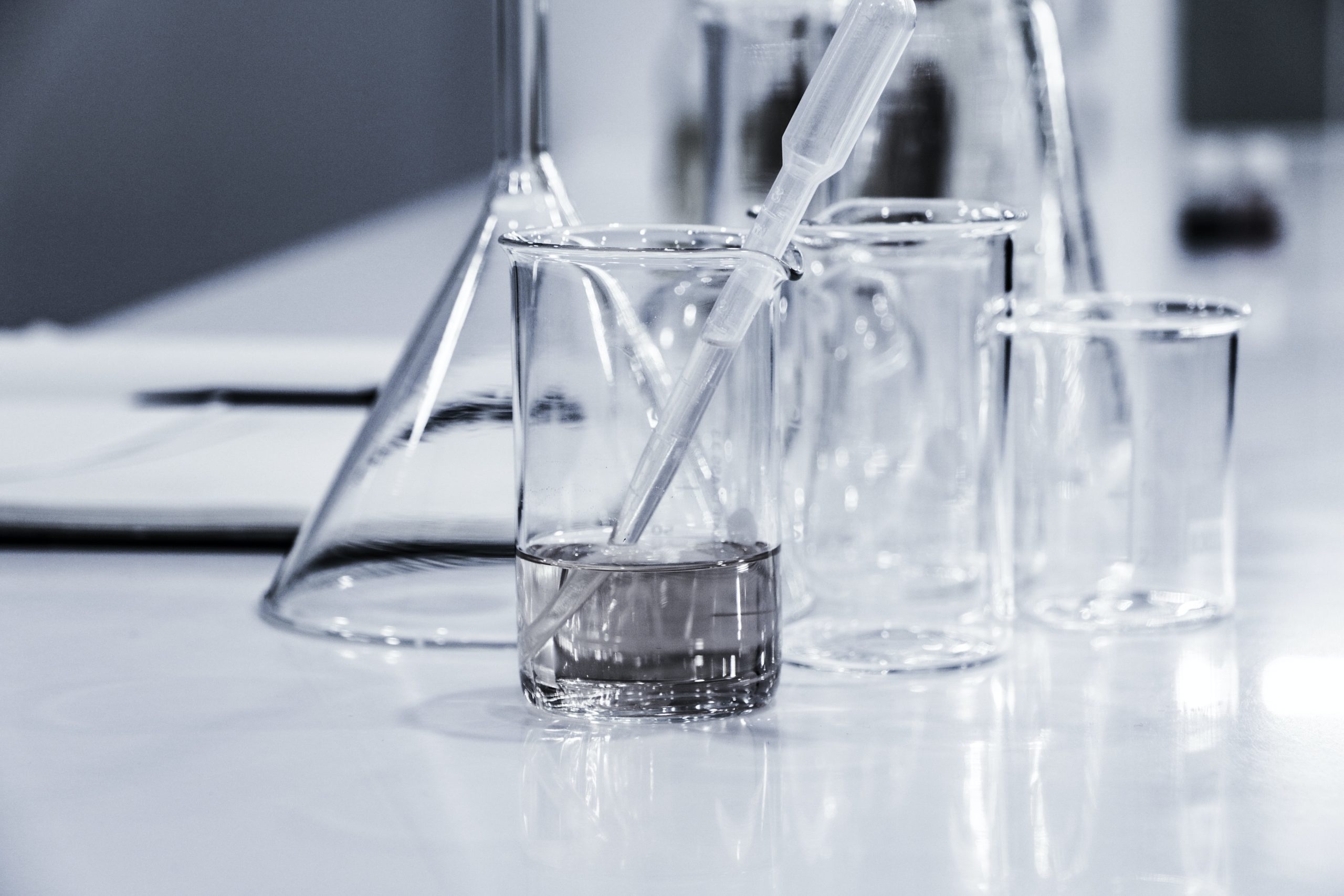It is a member of the Growth Hormone Secretagogue family, which is a substance that results in the secretion of a different substance. There is no structural similarity between GHRP-6 peptide and Growth Hormone Releasing Hormone (GHRH). It appears to work by using some specific receptors that are available at the hypothalamic or the pituitary level. Studies are suggesting the presence of GHRP-6 peptide in various peripheral tissues like the adrenal, heart, testis, ovary, skeletal muscle, and lung.
GHRP-6 peptide shows cytoprotective potential related to non-growth hormones, such as cardioprotective, neuroprotective, hepatoprotective, and anti-inflammatory effects.
Structure of GHRP-6 Peptide

Molecular Formula: C46H56N12O6
Molecular Weight : 873 g/mol
Sequence: His-D-Trp-Ala-Trp-D-Phe-Lys-NH2
CAS Number: 87616-84-0
GHRP-6 Peptide Mechanism of Action
The animal test subject studies have suggested that ghrelin, i.e., the “hunger hormone,” may be stimulated by Growth Hormone Releasing Peptide – 6. The stimulation may be completed via the ghrelin receptor, which acts at the hypothalamus or the pituitary level via specific receptors that are not similar to the endogenous Growth Hormone Releasing Hormone (GHRH) and thereby signals an increased production of Growth Hormone (GH). In response to the production of the Growth Hormone, Insulin-like Growth Factor-1 (IGF-1) is considered to be produced by the liver. The IGF-1 may be necessary for the promotion of cell proliferation and the prevention of cell death.
Research in GHRP-6 Peptide
The animal test subject studies were carried out to study the GHRP-6 peptide. Various theoretical actions of the GHRP-6 peptide are suggested in the studies since it appears to increase the production of the growth hormone from the pituitary gland and may thereby mimic the ghrelin, i.e., the hunger hormone considered to protect the hormone neurons.
Enhancement of the Healing Process and Aesthetic Outcome of the Wounds
GHRP-6 peptide is suggested to exert an impact on the accumulation of the extracellular matrix proteins, which thereby attenuated the inflammation of the wound, accelerated the wound closure, and improved the aesthetic outcome of the wound. The attenuation of the immunoinflammatory mediators, their effector cells, and the reduction of fibrosis-inducing cytokines have appear to be involved in the GHRP-6 peptide pharmacodynamics in the rat experiments that were based on the clean full-thickness controlled wounds. The combined action of these mechanisms may act to modulate the fibroblast’s response to injury, resulting in precocious closure with reduced scarring. The most appreciable observation is that these mechanisms have not shown any interference with the angiogenic repopulation or the reepithelialization process. The successive studies have signified the potential of various GHRPs to ameliorate the systemic and the local inflammatory processes by inhibiting the action of NF-κB. This results in the expression of the pro-inflammatory cytokines and acting as a chemokine receptor antagonist.
GHRP-6 Peptide Experimental Studies
The studies in a rat model with liver cirrhosis have suggested that GHRP-6 peptide may exhibit certain antifibrotic effects. The parenchymal fibrotic induration was prevented by GHRP-6 peptide in more than 85% of the cohort, while in 75%, the accumulated fibrotic material was removed. In a microarray experiment, the differentially expressed genes indicated the modulation of gene expression associated with redox metabolism by the GHRP-6. Exposure to GHRP-6 peptide was suggested to induce pharmacological benefits in varied experiments conducted during the last 15 years. Growth Hormone Releasing Peptide – 6 has also been suggested to host cytoprotective potential, encompassing the cardiac and the extracardiac organs. The numerous experimental scenarios that included reperfusion/ ischemia have suggested that GHRP-6 peptide exhibits antiapoptotic and antiestrogenic properties.
Muscle Cell Growth
GHRP-6 peptide has been suggested to promote the anabolic environment. The increased production of the insulin-like growth factor 1 (IGF-1) and the release of the growth hormone (GH) from the pituitary gland are the factors associated with gaining muscle mass. The protein synthesis in the body is considered to be increased with the increase in these factors.
Weight
The peptide has also been suggested to have a close association with fat loss after its influence in the organism; the body may be enabled to burn fat at a more optimal rate. GHRP-6 peptide has been suggested to improve metabolic rate, which may improve overall functioning associated with an equalized weight.
Cell Aging
Collagen production has been speculated to increase following exposure to GHRP-6 peptide, which consequently promotes lean muscle mass and enhanced energy levels. Growth Hormone Releasing Peptide – 6 has also been suggested to enhance the ability of the internal systems to repair old and worn-out cells and improve the function of joints and tissues.
Disclaimer: The products mentioned are not intended for human or animal consumption. Research chemicals are intended solely for laboratory experimentation and/or in-vitro testing. Bodily introduction of any sort is strictly prohibited by law. All purchases are limited to licensed researchers and/or qualified professionals. All information shared in this article is for educational purposes only.






